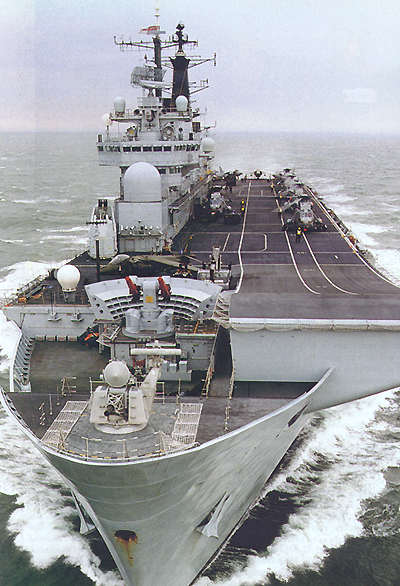

The standard British area-defense missile, the Sea Dart is a semi-active homing ramjet. The original variant employed vacuum-tube technology and was reportedly not entirely reliable as a result. Later versions used solid state technology and are considered much more reliable.
The Sea Dart is credited with seven enemy aircraft shot down during the Falklands War plus one British Grazelle helicopter. Unfortunately, several other firing opportunities were lost because of problems with the interlocks on the magazine doors, which were not always engaged properly. This is remarkably analogous to the problems besetting Britain's King George V battleships during World War II.
Missiles were loaded in two stages and are stowed vertically in magazines below the waterline. HMS Bristol carried 40 missiles while the Type 42 and Invincible carried 22 missiles. Bristol could carry 41 if necessary by storing one in the missile test room attached to the magazine.
Argentina was the only export customer for this missile, purchasing 60 missiles for their two Type 42 destroyers.
| Designation | Sea Dart GWS-30; CF-299 |
|---|---|
| Ship Class Used On | Invincible, Type 42, Bristol |
| Date In Service | 1967 |
| Weight | 1,200 lbs. (544 kg) |
| Dimensions | 16.5 x 172 in (42 x 437 cm) including booster Span: 36 in (91 cm) |
| Payload | 50 lbs. (22.7 kg) HE |
| Speed / Range | About Mach 2.0 / 25-30 nm |
| Propulsion | Ram jet sustainer plus booster |
Data from:
- "Jane's Pocket Book 9: Naval Armament" edited by Denis Archer
- "The Naval Institute Guide to World Naval Weapon Systems 1991/92" by Norman Friedman
Special help from Nick McCullen.
